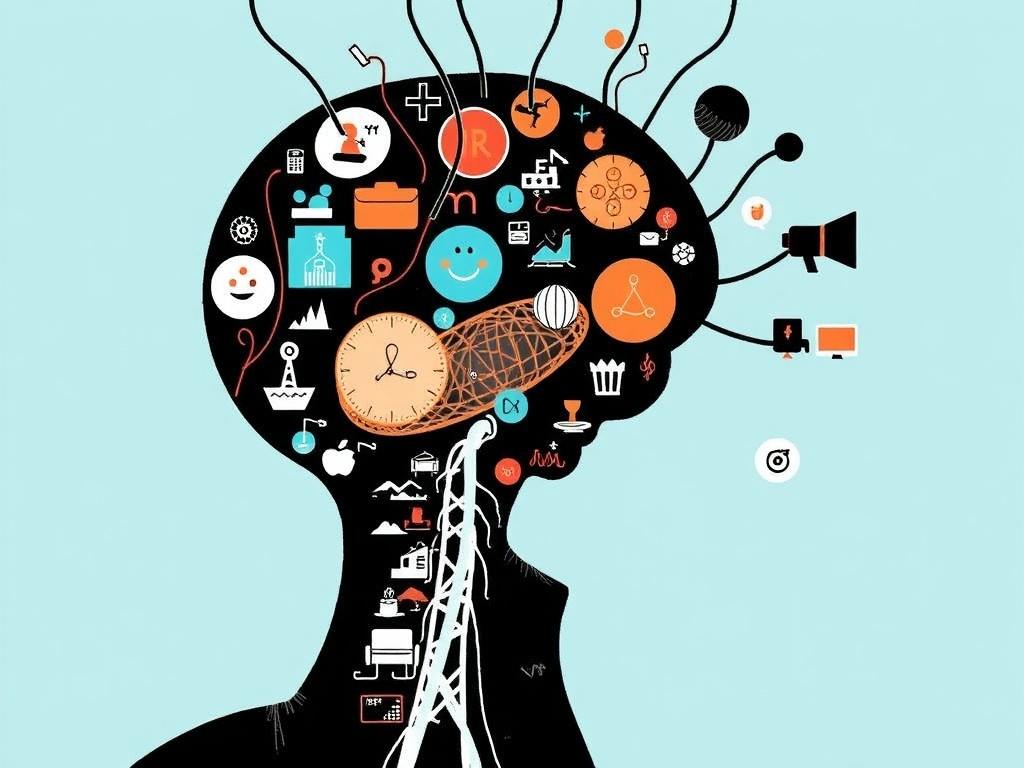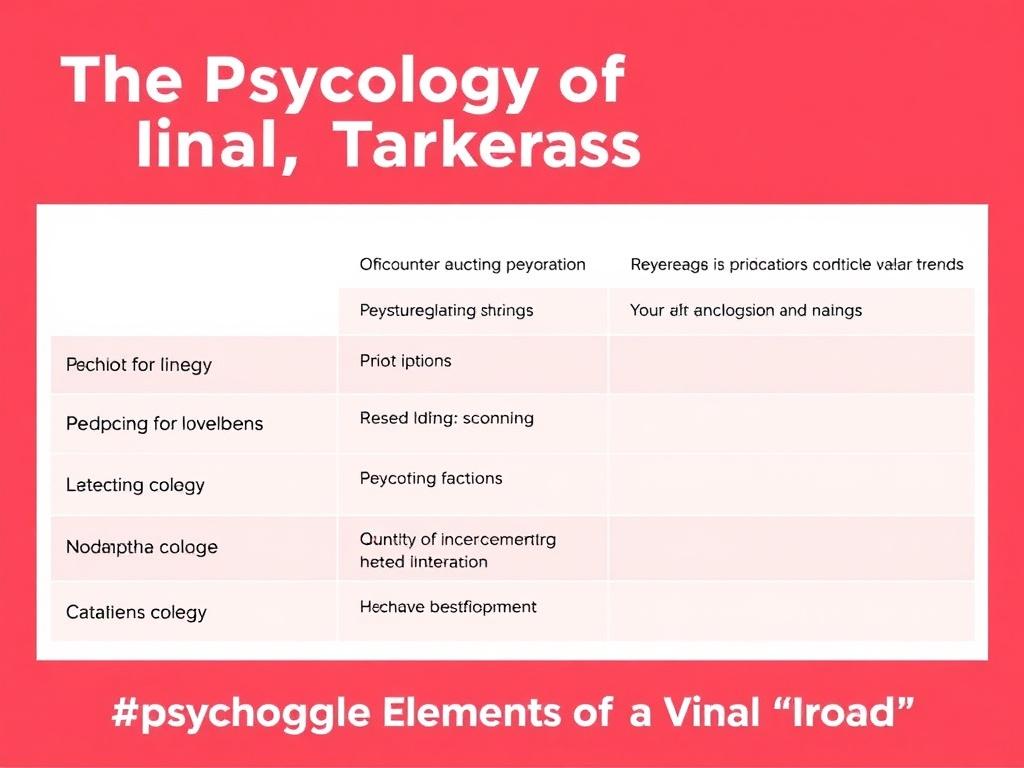In today’s interconnected digital world, viral trends have become a powerful force shaping cultures, conversations, and even economies. From catchy dance challenges on social media to unexpected memes spreading like wildfire, viral trends capture our attention in ways that can feel both mysterious and irresistible. But have you ever stopped to wonder why certain trends explode overnight while others barely get noticed? The answer lies deep in the psychology of viral trends—a fascinating intersection of human behavior, social influence, and digital dynamics.
Understanding viral trends requires peeling back layers of how our minds work and what drives us to share information. It’s not just about flashy content or catchy slogans; viral success often depends on tapping into emotions, social validation, and the innate human desire to belong and be recognized. We are wired to connect, communicate, and replicate behaviors that resonate with our identities and communities. This article will take you on a journey through the psychological factors behind viral trends, the role of social media, and why some ideas stick while others fizzle out.
What Exactly Are Viral Trends?
First, let’s clarify what we mean by viral trends. A viral trend is a cultural phenomenon—an idea, behavior, style, or piece of content—that spreads rapidly and widely from person to person, often through social media platforms, sometimes even becoming mainstream. Viral trends can be anything from a popular hashtag, a viral video, a dance craze, a fashion style, or even a social movement. They thrive on exponential sharing, often fueled by a blend of novelty, relevance, and emotional impact.
Think of viral trends as a form of social contagion. Much like how a virus infects hosts and spreads through contact, viral content propagates through the web of social connections. But unlike biological viruses, viral trends depend heavily on what captures human interest, encourages people to share, and triggers a chain reaction of engagement.
The Anatomy of a Viral Trend
When we explore the psychology of viral trends, it helps to break down the components that make an idea “go viral.” Here are a few crucial ingredients:
- Emotional Engagement: Content that evokes strong emotions—whether happiness, surprise, anger, or awe—is more likely to be shared.
- Social Currency: People like to share things that make them look good, smart, or funny in front of others.
- Practical Value: Useful or informative trends tend to get spread because people feel compelled to help others.
- Storytelling: A compelling narrative or easy-to-follow structure keeps people hooked and eager to pass it along.
- Triggers: Certain cues or situations remind people to share the trend, making it stick in everyday conversations.
These elements contribute to what marketing expert Jonah Berger called “STEPPS,” a framework that explains why ideas spread.
The Role of Social Proof and Influence
One of the strongest psychological forces behind viral trends is social proof—the tendency to look to others when deciding what is appropriate or popular. Humans are inherently social creatures, and we often rely on the behavior of others to guide our own actions. When we see a trend gaining momentum, we interpret it as a signal that it’s worth paying attention to and joining.
This dynamic is amplified by influencers, celebrities, and community leaders who can kickstart trends by endorsing or participating in them. Their large followings create a bandwagon effect where more and more people jump on board to feel included in something bigger than themselves.
How Social Media Fuels Viral Trends
Social media platforms are the perfect breeding ground for viral trends. Their design supports quick sharing, instant feedback through likes and comments, and the formation of tightly knit communities with shared interests. Platforms like TikTok, Instagram, and Twitter excel at pushing content that performs well within their algorithms, thereby boosting its visibility.
The immediacy of sharing combined with visual and interactive formats helps trends spread globally in moments, crossing cultural and demographic boundaries. The psychology of viral trends in digital spaces also highlights the importance of ease of replication—for example, challenges or memes that users can quickly remake or adapt.
Emotions at the Heart of Virality
Emotions are the currency of viral trends. Research shows that content sparking high-arousal emotions—whether positive or negative—increases the likelihood of sharing. Joy, excitement, surprise, and even anger or anxiety can motivate people to spread ideas rapidly.
Interestingly, positive emotions tend to encourage sharing for social bonding, while negative emotions may drive sharing due to the need to warn or seek support from others. This dual affective pathway explains why both hilarious memes and serious social justice campaigns can become viral.
The Power of Identity and Belonging
Viral trends often tap into our sense of identity and the desire to belong to groups. Participating in a trending challenge or adopting a viral fashion statement serves as a social signal, communicating group membership and shared values. This need for inclusion drives people to conform by replicating viral behaviors.
Moreover, some trends create subcultures or communities centered around shared interests or ideologies. Being part of a viral phenomenon offers people a chance to feel connected, validated, and recognized within a broader social narrative.
Case Studies: Viral Trends That Shaped Culture
To truly appreciate the psychology of viral trends, let’s look at a few notable examples and what made them tick psychologically.
| Viral Trend | Key Psychological Drivers | Impact |
|---|---|---|
| Ice Bucket Challenge (2014) | Practical value (raising awareness), social proof, emotional engagement (charity, surprise) | Raised millions for ALS research; encouraged global participation and empathetic sharing |
| Harlem Shake (2013) | Novelty, social currency, ease of replication | Massive worldwide participation; boosted online community interaction and creativity |
| “Distracted Boyfriend” Meme | Humor, storytelling, emotional engagement, social currency | Used globally for multiple contexts; became a symbol of relational humor and commentary |
| TikTok Dance Challenges | Identity, social proof, emotions, ease of replication | Helped launch careers; connected global youth culture and interaction |
These examples demonstrate how viral trends succeed by engaging multiple psychological factors at once, creating shared experiences that resonate deeply with various audiences.
Why Some Trends Fail to Go Viral

Not all content attempts become viral trends. Understanding why some trends fail is as important as knowing why others succeed. Common reasons for failure include:
- Lack of Emotional Connection: If a trend doesn’t evoke feelings, it lacks the motivational spark for sharing.
- Complexity: Trends that are hard to understand or replicate discourage participation.
- Poor Timing: Sometimes, the cultural moment or context isn’t ripe.
- Overexposure: Saturation can lead to burnout and reduced interest.
- Negative Association: If the trend is perceived as offensive or insensitive, it may be rejected by the public.
Viral trends must strike a delicate balance that aligns with cultural values and social contexts to thrive.
Role of Novelty and Familiarity
Interestingly, successful viral trends often balance novelty with familiarity. A wholly new concept may confuse or alienate audiences, while overly familiar ideas may be ignored. Trends that reinterpret familiar ideas in new ways create a sweet spot that sparks curiosity while feeling accessible and relevant.
The Future of Viral Trends in a Shifting Digital Landscape
As technology and social platforms evolve, so does the psychology behind viral trends. Advances in artificial intelligence, virtual reality, and augmented reality are opening up new possibilities for how trends are created, shared, and experienced. Interactive and immersive content may soon redefine what it means for a trend to “go viral.”
Moreover, the increasing awareness of mental health, misinformation, and digital ethics is shaping how society responds to viral content. Trends with positive social impact and authenticity are gaining importance, reflecting a cultural shift in shared values.
Tips for Creating Viral Content Based on Psychological Insights
If you’re curious about how to harness the psychology of viral trends for your own content, here are some practical tips:
| Strategy | Psychological Principle | Why It Works |
|---|---|---|
| Trigger strong emotions | Emotional engagement | Increases motivation to share |
| Make it easy to replicate | Ease of participation | Encourages widespread adoption |
| Use humor or storytelling | Social currency & memorability | Makes content enjoyable and memorable |
| Tap into existing social groups or interests | Belonging and identity | Drives organic sharing within communities |
| Leverage influencers | Social proof and influence | Provides credibility and reach |
By understanding these psychological drivers, content creators, marketers, and everyday users can better appreciate what contributes to the virality of trends.
Ethical Considerations Surrounding Viral Trends

While viral trends can be exciting and fun, it’s important to recognize the ethical implications. Some trends may promote harmful behaviors, spread misinformation, or exploit social anxieties. The psychology of viral trends reminds us of the immense responsibility content creators hold to consider the consequences of their messages.
Platforms and users alike play a role in promoting ethical virality—supporting trends that uplift and inform, while resisting those that harm or deceive.
Summary Table: Psychological Elements of Viral Trends

| Psychological Element | Description | Example |
|---|---|---|
| Emotional Engagement | Triggers strong feelings that motivate sharing | Ice Bucket Challenge’s emotional appeal to charity |
| Social Proof | People imitate behaviors seen as popular or accepted | Influencers popularizing TikTok dances |
| Social Currency | Sharing content enhances personal image | Funny memes circulating to show wit |
| Practical Value | Useful content shared to help others | Life hacks or how-to videos |
| Triggers | Cues that remind people to engage with the content | Day of the week prompting #ThrowbackThursday posts |
| Identity & Belonging | Participation expresses group membership | Viral fashion trends signaling youth culture |
Conclusion
The psychology of viral trends reveals much about what motivates human connection and communication in the digital age. From emotional engagement and social proof to the profound need for identity and belonging, viral phenomena are more than fleeting entertainment—they are reflections of how we navigate our social world. Understanding these psychological principles helps explain the immense power viral trends hold, why they can unite or divide us, and how carefully crafted ideas can ripple across nations and generations. As consumers and creators, being mindful of these forces not only enriches our appreciation of viral culture but also empowers us to participate thoughtfully and ethically in shaping the trends that define our time.




















